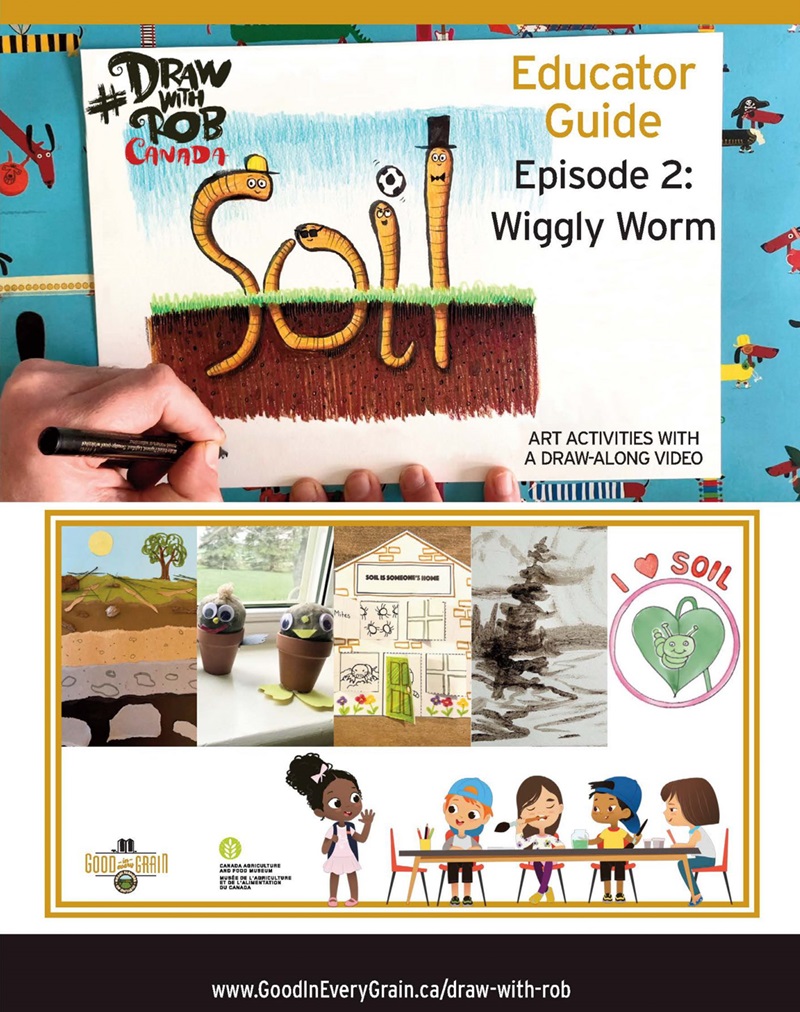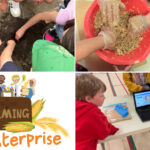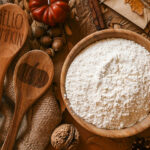Sustainable farming starts with soil

This month we’re looking at the foundation of life on our planet, whether food comes from plants or from animals that eat plants. We’re talking about soil!
In this blog we will provide:
- Background information for teachers
- Soil facts to share with your students!
- We all play a role in protecting soil. How do farmers protect it?
- Let’s discuss!
- Vocabulary
- Tools for teaching (videos, field trips, activities and more!)
Background information for teachers
Farm & Food Care has a great guide and resources that will bring you up to speed on soil and sustainability. Our goal in this blog is to help you bring that knowledge into the classroom, so we’ve done the searching for you.

Check out the Real Dirt on Farming (Chapter 3, page 21).
Talking with students about soil and sustainability
Here’s a visual that you might use on a teaching slide.

Soil facts to share with your students!
- Soil is not the same everywhere. It is made by its environment, by rocks that break down and decaying animals and plants that lived there. That makes it special to the place where it exists. For example, soil in southern Ontario is not the same as soil on the prairies. Each type of soil can feed certain types of plants. Heat, sun, and rain also affect what types of plants can grow in any place.
- The jobs of soil are:
- providing nutrients (food) for plants and grains
- making and storing gases such as carbon dioxide
- storing heat and water
- providing a home for plants, animals, and microorganisms (tiny living things)
- breaking down organic waste
Fun fact! There are more living organisms in a teaspoon of soil than there are people on Earth.
We don’t eat soil, but we all need it to eat! We all play a role in protecting it. How do farmers protect it? What can you do?
- For farmers, it’s very important to protect the soil. It’s even part of their job.
- Because it’s part of Ontario grain farmers’ job to protect soil, they are paying attention to sustainable farming. They want to make sure future generations will have healthy soil for growing their food. Without healthy soil, we would not have healthy food.
- Sustainable farming means farmers are doing things to protect, enhance and maintain the land they grow our food on.. Here are some examples:
- cover crops are planted in a field after a crop (like wheat!) is harvested. They protect soil by preventing nutrients from being washed away by rain, reduce the amount of weeds in fields, control pests like insects and diseases, and improve the amount of nutrients in the soil.
- soil testing helps farmers identify their soil profile and nutrients sound in a field. They use these tests to decide what nutritional support the soil needs in which areas of a field.
- applying fertilizer only from the right source, at the right rate, at the right time, and in the right place (the 4Rs of nutrient management).
- Crop rotation is a sustainable practice that farmers have used for centuries. The soil can lose nutrients if the same crop is grown in the same field year after year. Rotating the crops, they plant in a field helps reduce pests like weeds, diseases, or insects, and maintain a healthy soil biodiversity.
- Technology is helping farming develop and improve sustainable practices to allow farmers to be more efficient, aware of what is going on in their fields, and precise during their farming practices.
EXTENSION – Consider having your students research more ways farmers protect the soil and share their findings. HINT: Cover crops, soil testing, crop rotation, wetland conversation, natural field borders etc.
Let’s discuss!
- How will the world get more soil?
- Who can do the most to protect soil so we can have good food?
- Can we help?
- What can we do?
- How can we help the world have enough food?
Vocabulary
- Grain: a seed or seeds from a plant, such as oats or wheat
- Soil: the top layer of the Earth that plants will grow in
- Staple food: a food that people eat often and that makes up a large part of their diet
- Sustainable: to keep a thing for a long time without making it become less
Tools for teaching!
Here is a collection of videos and activities to help students understand grain farming and sustainability!
For teachers (we know you need confidence to teach unfamiliar topics!)
- Supplement your knowledge with the Real Dirt on Farming (Chapter 3)
- Take a 360o tour of an eastern Canadian grain farm
- Learn about soil health with videos and case studies
- Explore the Farm & Food Care Educators’ Guides
Videos for students
Activities and experiments
- A draw-along video teaching students about wiggly worms and soil as they draw!
- A guide packed with art activities to help elementary students explore their artistic creativity and grow a lifelong awareness of local farming, food origins and nutrition. Core concepts: art forms, soil health and community of organisms.
- Dynamic offerings from Ingenium! A Handful of Soil – Educational Activity Kit (Grades JK – 1 Ontario; Preschool – Elementary Cycle 1 Quebec)
- Soil Superheroes – Educational Activity Kit (Grades 3 – 4 Ontario; Elementary Cycle 2 Quebec)
- For you from Agscape: Curriculum-linked resources (choose your grade)
- Soil activity sheet, perfect for early finishers!
- Soil Science
- BC Agriculture in the Classroom
- Field Trips:
- AgVenture: Soil Science
- A Handful of Soil




